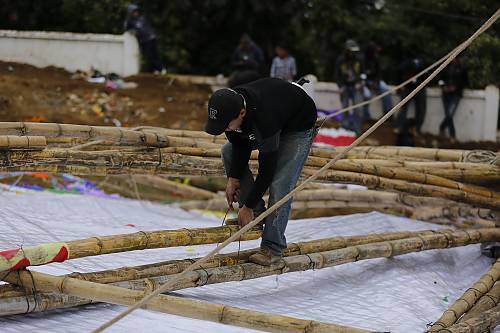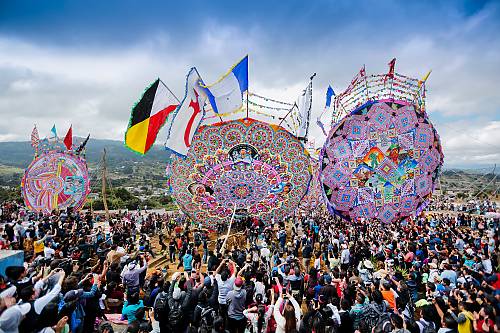Technique of making the giant kites of Santiago Sacatepéquez and Sumpango, Guatemala
Inscribed in 2024 (19.COM) on the Representative List of the Intangible Cultural Heritage of Humanity

The tradition of making and flying kites in Santiago Sacatepéquez and Sumpango, Guatemala dates back to the late nineteenth and early twentieth centuries. The kites are made over several months and exhibited during the fairs of the Day of the Saints and the Dead, with the aim to communicate with the ancestors. There are five steps to the process: (a) design; (b) preparing the canvas (the visible face of the kite); (c) decorating the canvas using multi-coloured tissue paper; (d) making the lining (the reverse of the kite); and (e) assembling the canvas, lining, fringes and tail. The designs address themes related to the environment, the fight against violence, and human rights. The kites are then publicly exhibited or flown during the fairs in each community. People of all ages, genders and abilities participate. Craftspeople are affiliated to committees, and their Boards are responsible for organizing the fairs, establishing the rules, and awarding prizes, with support from local municipalities and the private sector. The tradition is transmitted informally through participation in the process. It is perceived as a means of connecting with ancestors, warding off negative spirits and promoting renewal. It also results in the creation of community spaces that promote dialogue and inclusion.









